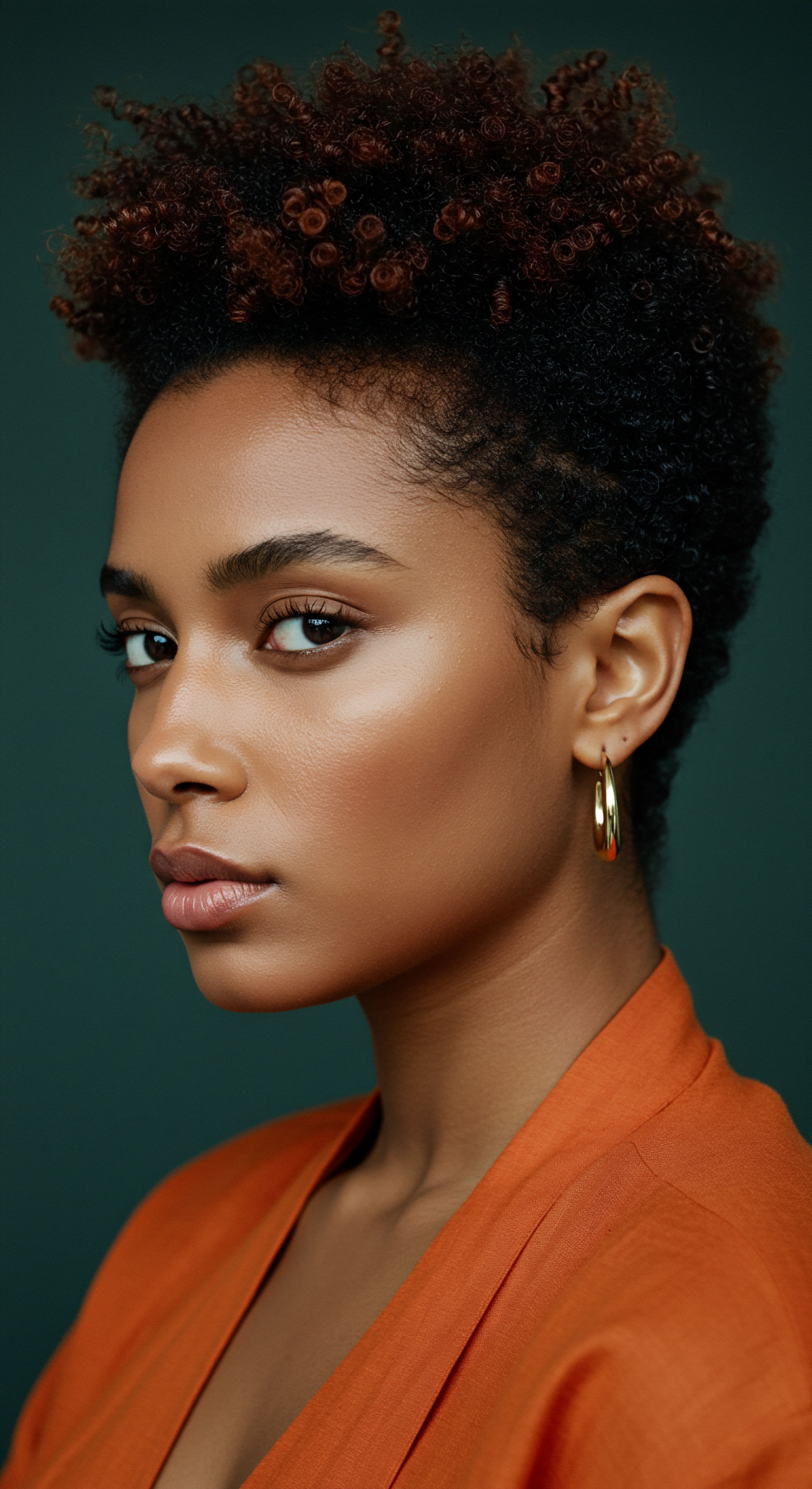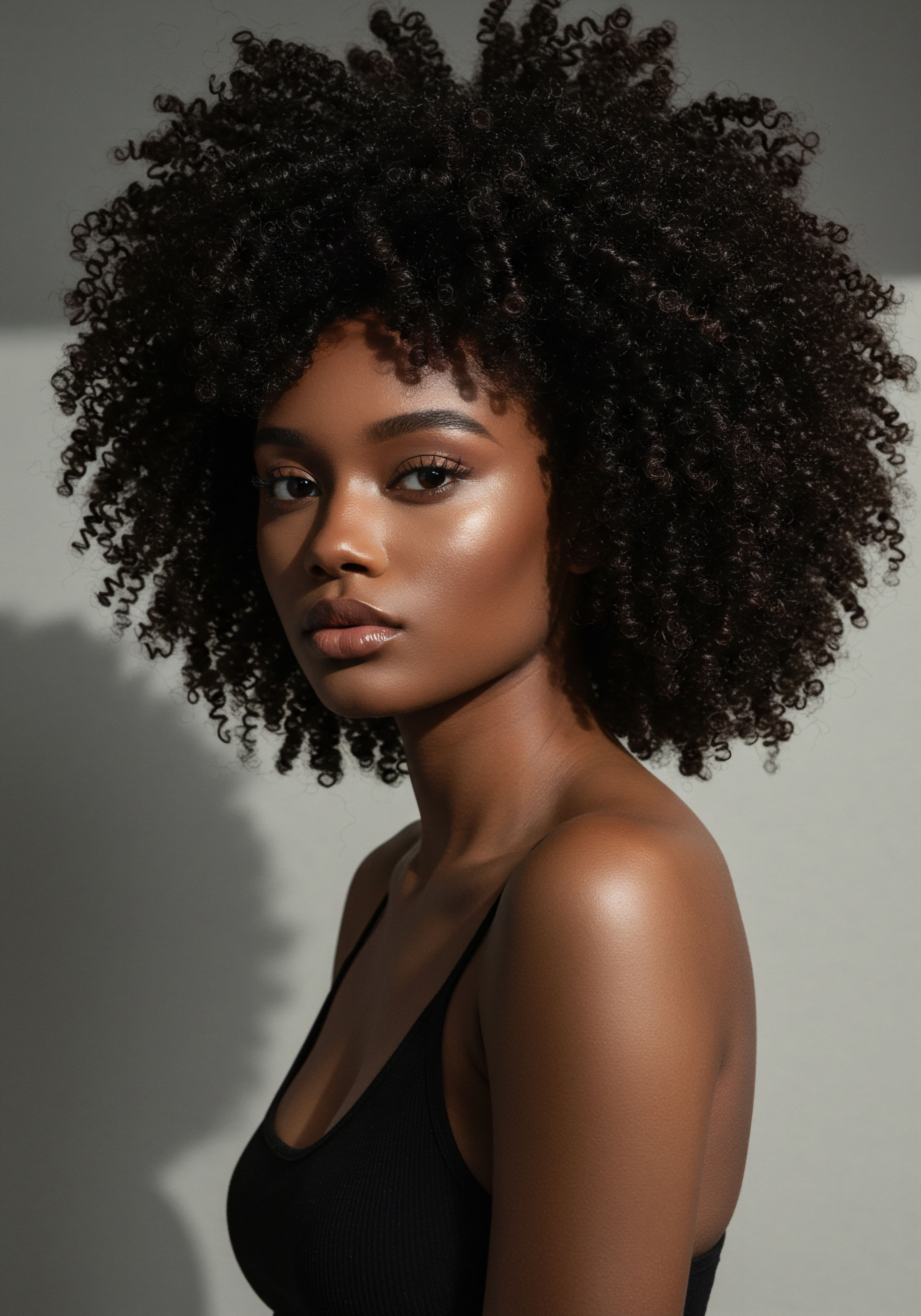
Roots
A whisper from centuries past often finds its way into the present, settling gently upon our shoulders, influencing perceptions in ways both overt and subtly profound. Consider the quiet observation that some echoes of history, though softened by time, still reverberate in the way we view textured hair. This is not a mere academic exercise; it is an invitation to feel the enduring presence of past mandates, particularly the Tignon Laws of 18th-century Louisiana, and to discern their subtle, yet persistent, imprint on today’s beauty standards and societal expectations for textured hair.
The Tignon Laws, enacted in 1786 by Governor Esteban Miró, mandated that free women of color in New Orleans cover their hair with a tignon, a scarf or handkerchief. This decree, ostensibly a measure of social distinction, sought to diminish the perceived allure and social standing of these women, whose elaborate hairstyles and vibrant presentation often rivaled or surpassed those of white women. The legislation aimed to visually categorize and suppress, forcing a visible marker of their supposed lower status.
At their core, these laws represented an attempt to control the visible expression of identity and beauty, particularly when that expression challenged established social hierarchies. The headwrap, intended as a symbol of subjugation, was often transformed by the women into statements of defiant beauty and cultural pride, adorned with intricate folds and rich fabrics. This act of reclaiming the tignon, turning a tool of oppression into an accessory of artistry, stands as a testament to the enduring spirit of resilience.
The Tignon Laws, though historical, continue to subtly influence modern perceptions of textured hair by embedding notions of control and categorization into beauty standards.

The Weight of Historical Precedent
Historical mandates such as the Tignon Laws established a precedent for external regulation of Black women’s appearance. This external gaze, which sought to define and restrict, contributed to a societal framework where textured hair, in its natural glory, could be deemed problematic or require containment. The concept of “managing” or “taming” textured hair often carries undertones that connect to this historical desire for control, even if unconsciously.
- Legislation ❉ The Tignon Laws were a direct legislative attempt to regulate Black women’s appearance, specifically their hair, during a specific historical period.
- Social Control ❉ Beyond legal enforcement, these laws aimed to exert social control, visually marking free women of color to maintain racial hierarchies.
- Cultural Resistance ❉ Despite their oppressive intent, the women often transformed the tignon into an artistic expression, showcasing resilience and cultural continuity.

How Does Societal Control Over Hair Manifest Today?
While overt laws dictating hair coverings are gone, the mechanisms of societal control have simply shapeshifted. Today, this control often manifests as implicit biases in professional settings, educational environments, and even within media representation. The subtle pressure to conform to Eurocentric beauty standards, which often favor straightened hair, can be seen as a modern echo of the Tignon Laws’ intent to diminish the visibility and celebration of natural Black hair.
Consider the persistent narratives that label natural textured hair as “unprofessional” or “unpolished” in certain contexts. This judgment, though not legally enforced, exerts significant social and economic pressure. It subtly guides choices about styling, product use, and even self-perception, leading many to alter their hair to fit a narrow, often Eurocentric, definition of acceptability. This is a quiet, yet powerful, continuation of historical efforts to dictate how textured hair should appear in public spaces.

Ritual
Stepping into the daily practices that shape our connection with textured hair, we often encounter a rich tapestry of choices, techniques, and deeply personal rituals. These daily acts of care and styling are not merely about aesthetics; they are intimate conversations with our heritage, our identity, and the enduring influence of past societal pressures. How do the lingering effects of historical mandates, such as the Tignon Laws, subtly guide these contemporary rituals, from the products we choose to the styles we embrace?
The Tignon Laws, in their insistence on concealment, indirectly shaped the perception of natural textured hair as something to be hidden or “managed.” This historical context has contributed to a complex relationship with natural hair, where its inherent beauty was, for a time, deemed secondary to conformity. Even today, the pursuit of “sleekness” or “straightness” in textured hair styling, while often a personal aesthetic choice, can also be a quiet response to these ingrained societal expectations.
Our rituals of care and styling, therefore, are not just about personal preference; they are also a dialogue with history. The time and effort invested in manipulating textured hair to conform to certain standards, whether through heat styling or chemical processes, can sometimes reflect a subconscious adherence to ideals born from historical attempts to regulate appearance.

The Evolution of Styling Choices
The sheer variety of styling options available for textured hair today stands in stark contrast to the mandated concealment of the Tignon era. Yet, even with this freedom, certain styling choices remain implicitly favored in mainstream settings. The emphasis on protective styles, for instance, while offering undeniable benefits for hair health, can also be seen as a continuation of the concept of “containing” or “controlling” hair, albeit for different reasons. The widespread adoption of wigs and extensions, while empowering for many, also presents an alternative to natural presentation that can sometimes be influenced by a desire to align with conventional beauty norms.
The choices we make regarding our hair are often deeply personal, yet they seldom exist in a vacuum. The availability and marketing of certain products, the prevalence of specific styles in media, and even the casual comments received about one’s hair all contribute to a collective understanding of what is considered “acceptable” or “beautiful.” This collective understanding often bears the faint imprint of historical biases, even if unacknowledged.
Contemporary hair rituals for textured hair, though diverse, can subtly reflect historical societal pressures through preferences for certain styles or product uses.

Do Product Formulations Still Reflect Historical Biases?
The very formulations of hair products, particularly those designed for textured hair, can sometimes offer a glimpse into these lingering perceptions. For decades, the market was saturated with products promising to “tame,” “straighten,” or “control” curls and coils, rather than to nourish and enhance their natural structure. While this trend has begun to shift with the rise of the natural hair movement, the legacy of these product philosophies remains.
This is not to say that all straightening products are inherently problematic, but rather to highlight the historical context that shaped their prominence. The emphasis on chemical relaxers, for instance, which became widely popular in the 20th century, can be viewed as a direct response to the societal pressure to achieve a straightened aesthetic. This pressure, in turn, can be traced back to earlier periods when natural Black hair was deemed “unruly” or “unacceptable” in dominant social circles.
| Historical Product Focus Straightening, Taming, Relaxing |
| Modern Product Focus (Emerging) Hydration, Definition, Nourishment |
| Historical Product Focus Chemical Alteration |
| Modern Product Focus (Emerging) Natural Ingredient Emphasis |
| Historical Product Focus Concealment of Texture |
| Modern Product Focus (Emerging) Enhancement of Natural Pattern |
| Historical Product Focus The shift reflects a growing recognition of textured hair's inherent beauty. |

Relay
To truly grasp the enduring resonance of the Tignon Laws, we must step beyond the surface of historical anecdote and daily ritual, venturing into a more sophisticated examination of their cultural and societal relay. This requires a profound insight into how the very fabric of perception, often unconsciously, carries the imprints of past attempts to regulate identity through appearance. How do these historical decrees, once confined to a specific geographic and temporal space, continue to shape the broader socio-cultural landscape surrounding textured hair today?
The Tignon Laws were not isolated incidents; they were part of a larger historical pattern of legislating and policing Black bodies and appearances, particularly those of Black women. This historical context established a deep-seated societal norm where natural Black hair could be viewed through a lens of scrutiny, judgment, and even dismissal. This historical “othering” of textured hair has unfortunately persisted, manifesting in contemporary forms of discrimination and bias.
One compelling example of this persistent bias comes from research into workplace perceptions. The CROWN Research Study, a significant inquiry into hair bias, found that Black women are 3.4 times more likely to be perceived as unprofessional than white women when wearing their hair in a natural style. This statistic, stark in its clarity, speaks to a deeply ingrained prejudice that, while not a direct legal mandate like the Tignon Laws, certainly operates as a powerful societal barrier.
It reveals how the historical association of natural Black hair with “unruliness” or “lack of decorum” continues to influence contemporary professional standards and expectations. This is a subtle yet forceful form of control, impacting economic opportunities and psychological well-being.

The Societal Mirror How Do Institutions Reflect Past Biases?
Institutions, from educational systems to corporate environments, often serve as societal mirrors, reflecting and perpetuating existing biases, even if unintentionally. The Tignon Laws, by establishing a visual hierarchy based on hair, contributed to a long-standing tradition of judging and categorizing individuals based on their appearance. This historical precedent has filtered into modern institutional practices, where dress codes and unspoken norms can disproportionately impact individuals with textured hair.
Consider the often-cited anecdotes of students being sent home from school for wearing braids or dreadlocks, or professionals being denied opportunities due to their natural hairstyles. These instances, while seemingly isolated, collectively illustrate a systemic issue rooted in historical perceptions. The concept of “neatness” or “professionalism” often remains narrowly defined, leaving little room for the diverse and natural expressions of textured hair.
- Educational Settings ❉ Instances of dress code enforcement disproportionately affecting students with textured hair.
- Corporate Environments ❉ Unspoken expectations regarding hair presentation that can disadvantage individuals with natural styles.
- Media Portrayals ❉ Underrepresentation or stereotypical portrayal of textured hair, limiting positive and diverse visual examples.

Are Psychological Impacts a Lingering Echo of Tignon Laws?
The psychological toll of navigating these persistent biases is a significant, yet often unseen, consequence of historical mandates. When one’s natural hair is repeatedly subjected to scrutiny, judgment, or perceived as less desirable, it can impact self-esteem and identity. The Tignon Laws, by forcing a visual suppression, directly aimed to undermine the confidence and social standing of free women of color. Today, while the methods are less overt, the psychological impact can be similar.
The pressure to alter one’s hair to fit societal norms can lead to feelings of inadequacy, self-consciousness, or even a disconnection from one’s cultural heritage. This constant negotiation between personal expression and societal expectation creates a unique burden for individuals with textured hair. The freedom to wear one’s hair naturally, without fear of judgment or professional repercussions, remains a vital aspect of true liberation from these historical chains.
| Domain of Impact Workplace |
| Manifestation of Influence Perceived unprofessionalism of natural styles, impacting hiring and promotion. |
| Domain of Impact Education |
| Manifestation of Influence Discriminatory dress codes, leading to disciplinary actions for natural hair. |
| Domain of Impact Self-Perception |
| Manifestation of Influence Internalized beauty standards, influencing styling choices and self-esteem. |
| Domain of Impact These influences underscore the enduring legacy of historical regulations on appearance. |
The CROWN Research Study reveals a significant contemporary bias ❉ Black women wearing natural hair are 3.4 times more likely to be perceived as unprofessional than white women.

Reflection
The journey through the Tignon Laws and their enduring presence reveals a delicate interplay between history, identity, and the evolving landscape of beauty. While the mandates of the past are no longer enforced by law, their spectral influence persists, subtly shaping perceptions, choices, and even the very language we use to describe textured hair. The freedom to wear one’s hair naturally, without the burden of historical judgment or contemporary bias, remains a profound act of self-acceptance and cultural affirmation. This ongoing dialogue with our hair is a testament to resilience, a quiet reclaiming of beauty, and a continuous step toward a future where every strand tells a story of liberation and authentic expression.

References
- Dove CROWN Research Study. (2019). The CROWN Research Study ❉ Hair Bias in the Workplace. Unilever.
- Govenar, C. (2001). African American Dress and Adornment ❉ A Cultural History. University Press of Mississippi.
- White, D. G. (1999). Ar’n’t I a Woman? Female Slaves in the Plantation South. W. W. Norton & Company.
- Hall, J. L. (2019). Hair Story ❉ Untangling the Roots of Black Hair in America. St. Martin’s Press.
- Byrd, A. D. & Tharps, L. (2001). Hair Story ❉ Untangling the Roots of Black Hair in America. St. Martin’s Press.
- Mercer, K. (1994). Welcome to the Jungle ❉ New Positions in Cultural Studies. Routledge.
- Thompson, C. N. (2009). Black Women and the Politics of Hair. Journal of Black Studies.
- Banks, I. (2000). Hair Matters ❉ Beauty, Power, and Black Women’s Consciousness. New York University Press.